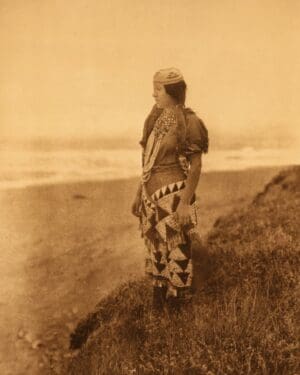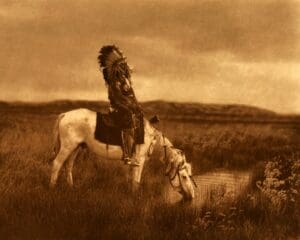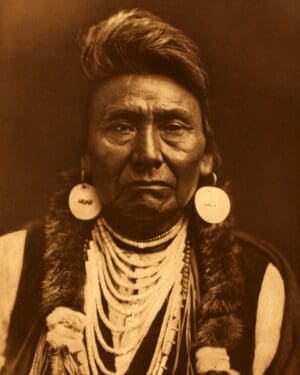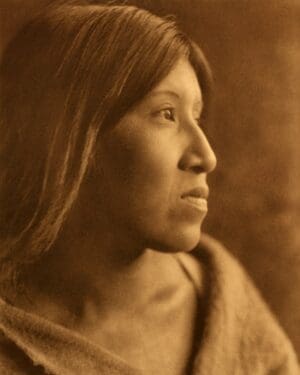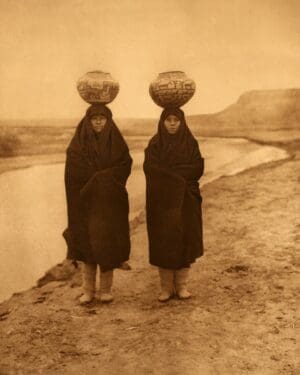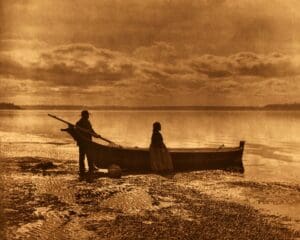Tolowa Native Americans
Tolowa Indian Photos by Edward S. Curtis
Tribal Summary
Dress
The clothing of the Tolowa was like that of the Klamath River region – kilt, fringed apron, and basketry cap for women, a loin-cloth for men; with moccasins and leggings for rough traveling and fur robes for cold weather. Men sometimes protected the upper body from cold with a deerskin shirt. On special occasions men and women of wealth wore a pair of long dentalia in the nasal septum. All women had perpendicular lines tattooed on the chin, and sometimes rows of dots on the forearms. The hair of women hung in two strands in front of the shoulders, that of men was worn in a bunch at the back of the head.
Dwelling
Tolowa dwellings resembled the Hupa plank house, differing only in that their roofs were peaked, not truncated. The underground sudatory with plank roof was like that of the Hupa, but the menstrual hut of the latter was not used.
Food
Acorns and grass seeds being far from abundant in their country, the Tolowa depended for vegetal food principally on the roots of bracken fern and on seaweed. Other articles of food were camas and other bulbs, young eel-grass, the tender underground portion of tule, salmon-berry shoots, the fruit of salal, huckleberry, elderberry, madrona, several species of Rubus, pine-nuts, hazelnuts, acorns, sunflower seeds. Almost any kind of fish and flesh obtainable was used as food; but the flesh of wildcats and grouse was, and by some still is, held to be poisonous. Mussels, clams, and crabs were important, because they were so easily obtained. Lampreys were a staple; porpoises and sharks, and occasionally a whale, were found stranded on the beach. Hair-seals, sea-lions, elk, deer, black bear, and nearly all 1he smaller land mammals were good for food.
Showing all 2 results


